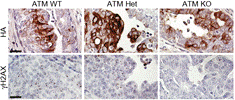Veterinary and Biomedical Sciences, Department of
Document Type
Article
Date of this Version
8-2016
Citation
BMC Genomics 2016, 17(Suppl 7):511 DOI 10.1186/s12864-016-2900-2
Abstract
Background: We recently reported the identification of Bacillus sp. NRRL B-14911 that induces heart autoimmunity by generating cardiac-reactive T cells through molecular mimicry. This marine bacterium was originally isolated from the Gulf of Mexico, but no associations with human diseases were reported. Therefore, to characterize its biological and medical significance, we sought to determine and analyze the complete genome sequence of Bacillus sp. NRRL B-14911.
Results: Based on the phylogenetic analysis of 16S ribosomal RNA (rRNA) genes, sequence analysis of the 16S-23S rDNA intergenic transcribed spacers, phenotypic microarray, and matrix-assisted laser desorption ionization time-offlight mass spectrometry, we propose that this organism belongs to the species Bacillus infantis, previously shown to be associated with sepsis in a newborn child. Analysis of the complete genome of Bacillus sp. NRRL B-14911 revealed several virulence factors including adhesins, invasins, colonization factors, siderophores and transporters. Likewise, the bacterial genome encodes a wide range of methyl transferases, transporters, enzymatic and biochemical pathways, and insertion sequence elements that are distinct from other closely related bacilli.
Conclusions: The complete genome sequence of Bacillus sp. NRRL B-14911 provided in this study may facilitate genetic manipulations to assess gene functions associated with bacterial survival and virulence. Additionally, this bacterium may serve as a useful tool to establish a disease model that permits systematic analysis of autoimmune events in various susceptible rodent strains.
Included in
Biochemistry, Biophysics, and Structural Biology Commons, Cell and Developmental Biology Commons, Veterinary Infectious Diseases Commons, Veterinary Microbiology and Immunobiology Commons, Veterinary Physiology Commons



Comments
From The International Conference on Intelligent Biology and Medicine (ICIBM) 2015 Indianapolis, IN, USA. 13-15 November 2015
Open Access -- This article is distributed under the terms of the Creative Commons Attribution 4.0 International License